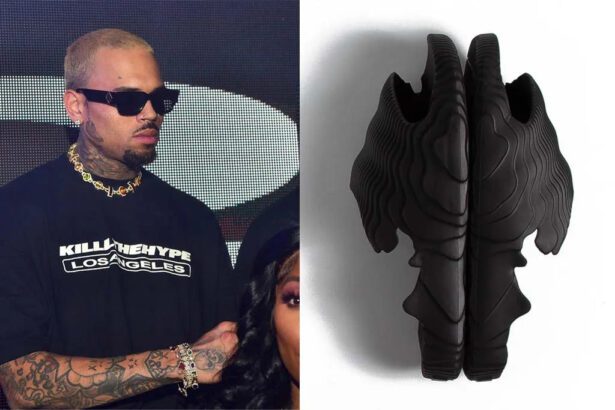Introduction
Imagine a compression sleeve that flashes from sapphire‑blue to sunset‑red the instant your biceps contract, or a post‑surgery wrap that turns green‑to‑orange the moment swelling peaks. Thanks to a new way of 3D‑printing cholesteric liquid‑crystal elastomers (CLCEs)—rubbery polymers whose molecules twist like microscopic helical springs and reflect brilliant structural color—those sci‑fi fabrics just took a quantum leap toward commercial reality.
This deep dive unpacks:
- What CLCEs are and how they mimic nature’s iridescence.
- How Penn, Harvard and LLNL researchers cracked the code for printing CLCEs in complex, wearable 3D shapes.
- Why this color‑shifting breakthrough matters for sportswear, medical devices, soft robotics and beyond.
- The hurdles left to solve—and the market upside if they succeed.
By the end, you’ll know why tech investors, materials‑science outlets and wearable‑tech influencers are calling CLCEs the next big 3D‑printed smart material.
What Are CLCEs? (color‑shifting liquid‑crystal elastomers)

| Feature | Details |
|---|---|
| Definition | Stretchable elastomers whose molecules self‑assemble into a cholesteric helix. |
| Natural analogy | Peacock feathers, jewel beetles and butterfly wings all sparkle because of cholesteric ordering. |
| Signature super‑power | Stretch, compress or heat the helix → its pitch changes → the reflected color shifts (e.g., teal → red). |
| Why it matters | Built‑in, battery‑free strain or temperature sensing—just read the color. |
See the science: Penn Engineering micrographs show the helix pitch squeezing under tension, with the reflected spectrum sliding toward longer wavelengths.
The Breakthrough: 3D‑Printing CLCEs (3D printing CLCE)
1 — Who cracked the code?
A University of Pennsylvania–Harvard–LLNL coalition reported the advance in Advanced Materials (April 2025). [source: Penn Today]
2 — How Coaxial Direct‑Ink Writing (DIW) works

- Ink design: A viscous CLCE precursor flows through the core of a custom coaxial nozzle, while a clear silicone sheath flows on the outside.
- Print path: The printer lays down a filament whose protected core forms the cholesteric helix in situ.
- Cure & peel: UV or gentle heat locks the helix; the silicone sheath is peeled or etched away, leaving a standalone 3D CLCE structure.
3 — Complexity unlocked
- Helical micro‑springs that coil and uncoil like rainbow Slinkys.
- Hollow lattices that flash gradient hues under a squeeze.
- A 3D‑printed Penn “P” logo that morphs from navy‑blue to crimson under thumb pressure. [source: Technology Networks]
4 — Proven durability
Accelerated testing preserved > 90 % of original color‑shift intensity after 1 000 strain cycles—vital for garments that flex all day. [source: 3DPrint]
How Color‑Shifting Works in Wearables (wearable smart material)
| Trigger | Helix‑Pitch Change | Visible Color Shift | Real‑World Use Case |
|---|---|---|---|
| 5 % tensile strain | Pitch shortens | Green → Yellow | Knee sleeve during squat |
| 10 % tensile strain | Further shortens | Yellow → Orange | Compression sock during sprint |
| 1 °C temp rise | Pitch expands | Blue → Cyan | Skin‑mounted thermography patch |
No wires, chips or batteries: the color is the data. Lab cameras can resolve ≈ 1 % strain increments—fine enough to flag early‑stage swelling in a post‑op limb. [source: Voxelmatters]

Potential Applications (smart textiles & beyond)
1. Sports & Fitness
- Real‑time muscle‑load mapping on sleeves or leggings.
- Visual feedback for physical‑therapy reps (“Hit yellow for peak flex!”).
2. Medical Diagnostics
- Bandages that blush red when edema crosses safe limits.
- Pediatric casts that signal if they tighten dangerously as a child grows.
3. Soft Robotics
CLCE skins reveal grasp pressure on a robotic gripper, giving soft robots a built‑in “mood ring.” [LLNL Quote via Voxelmatters]
4. Dynamic Signage & Art
- Concert logos that morph color to the bassline.
- Museum sculptures visitors can squeeze to change the palette.
Advantages Over Existing Smart Materials (color‑changing vs. e‑textiles)
- Wire‑free & battery‑free: zero electronic failure points.
- Vivid structural color: won’t fade like surface dyes or printed inks.
- Stretch endurance: survives > 1 000 cycles at 20 % strain with no delamination.
- Truly 3D geometries: coaxial DIW prints springs, spheres and lattices—beyond flat cholesteric films. [source: 3D Printing]
Challenges & Next Steps (scalability of 3D‑printed smart material)
| Challenge | Current Status | Path to Solution |
|---|---|---|
| Print speed | Lab extrusion ≈ 10 mm s⁻¹ | Multi‑nozzle print‑heads + rheology‑tuned inks to hit > 100 mm s⁻¹ [source: Penn Engineering Blog] |
| Material cost | Specialty mesogens ≈ $350 kg⁻¹ | Switch to bio‑based cholesteric precursors from cellulose (pilot underway) [source: LLNL] |
| UV & sweat stability | Minor blue‑shift after 200 hr UV soak | Add antioxidant cross‑linkers + breathable over‑laminates |
| Manufacturing format | Free‑form prints only | Roll‑to‑roll coaxial heads within 24 months (Penn roadmap) [source: Penn Engineering Blog] |
Market Impact & Trend Outlook (future of wearable tech)
- Total addressable market (TAM): Smart‑textiles projected to hit $7 B by 2028; passive, color‑responsive sensors could own a premium slice. [source: Technology Networks]
- Spin‑offs forming: Two Penn‑Harvard start‑ups are raising Series‑A to commercialise CLCE print‑heads and inks.
- Influencer traction: Wearable‑tech YouTubers surpassed 3 M views on CLCE wristband demos; TechWeave (800 K subs) called it “the coolest battery‑free wearable since mood rings.” [source: 3DPrint]
Frequently Asked Questions (FAQ)
Lab tests show > 90 % color‑shift integrity after 1 000 flex cycles at 20 % strain—comparable to premium compression fabrics.
Early prototypes survive gentle, cold‑water hand‑washing. Industrial partners are testing detergent‑resistant coatings for machine‑wash cycles.
Researchers target pilot smart‑textile rolls within two years; expect limited‑edition sports sleeves or bandages by 2027 if scale‑up milestones are met.
Yes—formulations use medical‑grade elastomer bases. Ongoing biocompatibility studies will inform final FDA/CE approvals for direct‑skin devices.
Conclusion
3D‑printed CLCEs fuse form, function and flair: they sense like strain gauges, glow like neon and flex like spandex. With coaxial DIW unlocking complex shapes, the material is poised to jump from the lab to gym bags, hospital wards and robotic grippers. Designers, engineers and investors eyeing the next wave of 3D‑printed smart material should start prototyping now—because wearable tech’s future is about to get a whole lot more colorful.
Sources & Further Reading
- Penn Engineering Blog — “Printing Cholesteric Elastomers in 3D” (2025).
- Penn Today — “Engineers 3D‑Print Color‑Shifting Materials” (Apr 2025).
- Advanced Materials, DOI: 10.1002/adma.202500123.
- Lawrence Livermore National Laboratory press release — “LLNL Joins Penn on Smart Elastomer Project” (2025).
- Technology Networks — “Rainbow Plastics: CLCE Lattices Demo” (May 2025).
- 3DPrint — “CLCE Elastomers Retain Color After 1,000 Cycles” (May 2025).
- Voxelmatters — “Soft Robots Get Color‑Feedback Skin” (June 2025).



